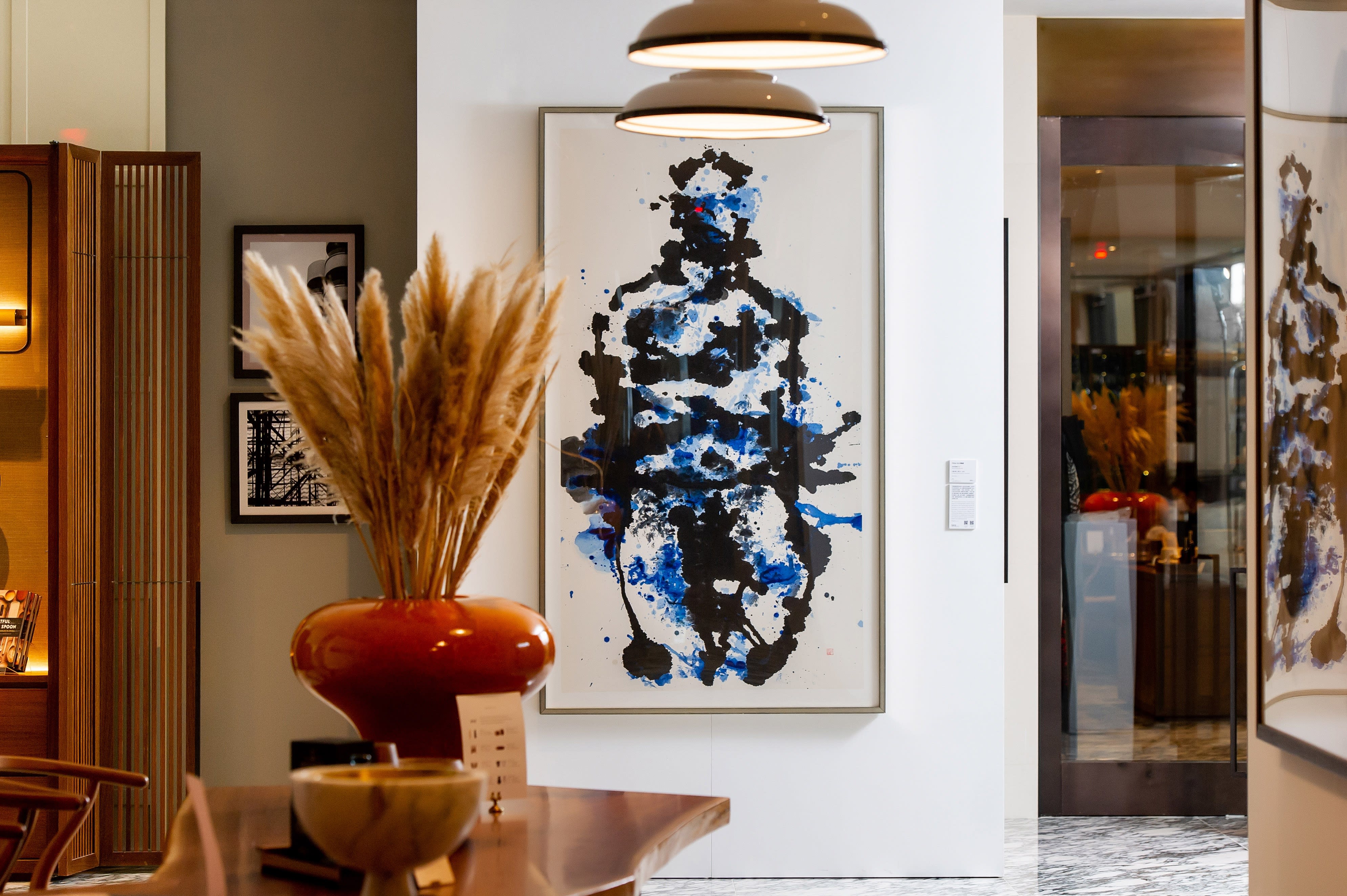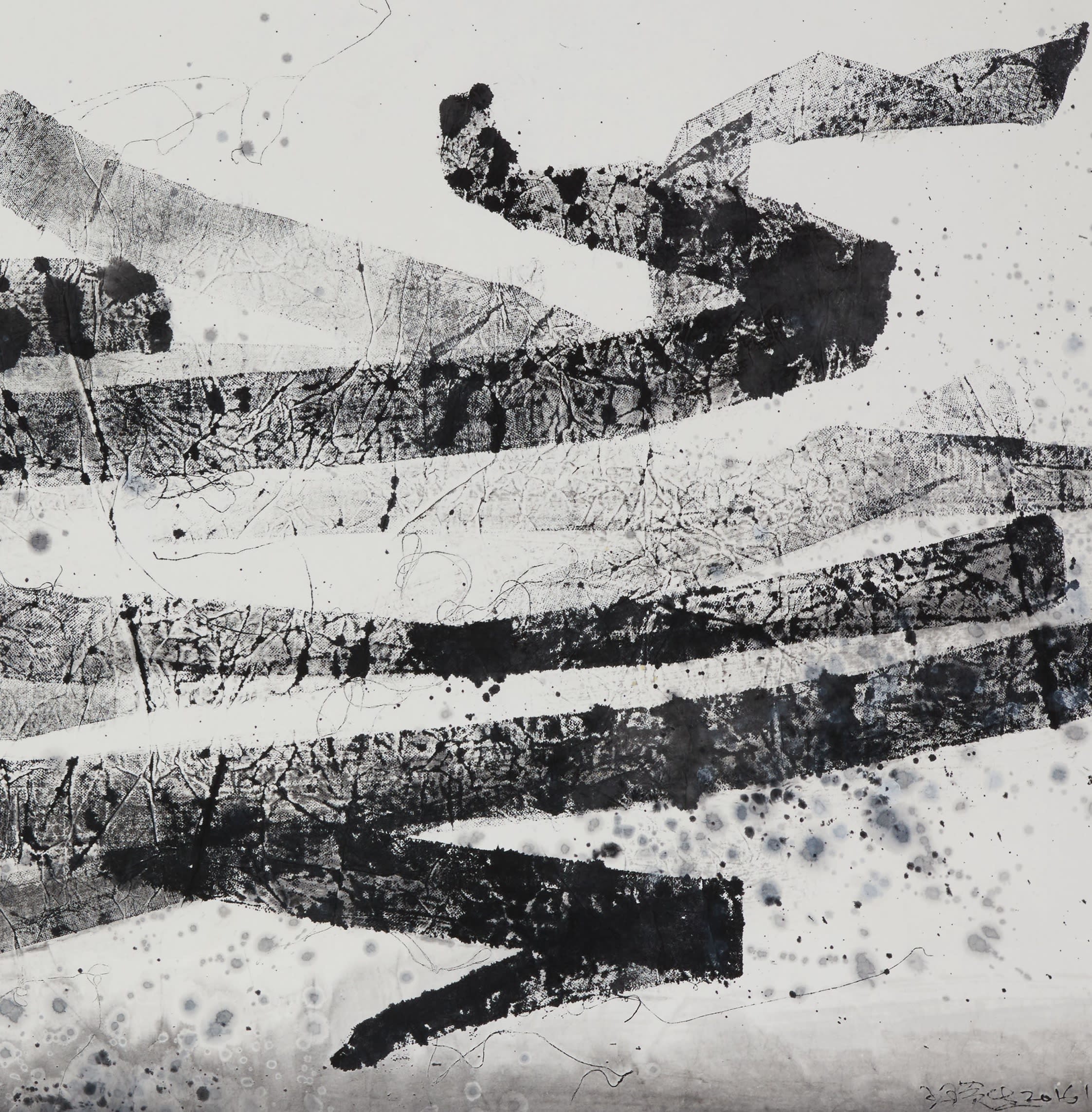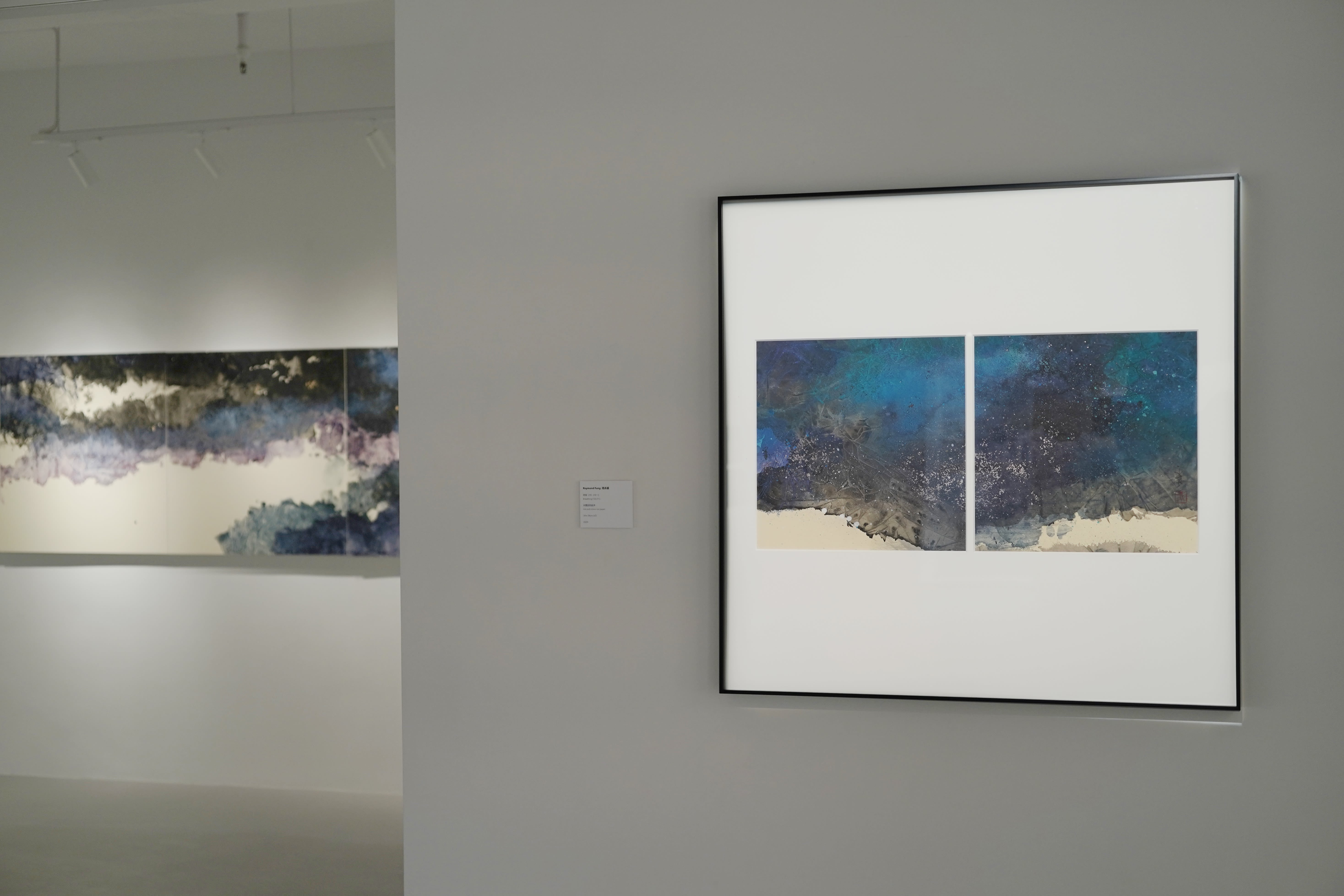
In this latest ARTicle, we would like to talk more about ink. In ink, Chinese artists find the origin of their creativity, or what is called the ink spirit, which allows them to connect their inner self with the rapidly changing world. And it is also for this reason that for over a decade, 3812 Gallery has continuously endeavoured to promote contemporary Ink art as a historically and culturally important expression of our time, strengthening the link between Eastern origin and the future of Chinese contemporary art.
A critical examination and an informed dialogue on contemporary ink art require not only a profound historical understanding, but also a forward-looking vision of ink aesthetics. In its encompassing nature and fluidity, ink, like the properties of water, is an indispensable substance as well as the philosophical basis of the art form. Ink art has been carried over through centuries, like the perpetual cycle of water, passing on long-lived traditions whilst continuously absorbing streams of new ideas and influences, merging the past, present and future. In its perennial journey that rejects a linear reading of its development, ink comes in a myriad of forms and styles to an extent that as a medium, it can be unrecognisable.

Chloe Ho, Nature Embodied #15, Chinese ink and acrylic on rice paper, 2013, 178 x 97cm
Consequently, what defines contemporary ink is not the physical presence of ink, but the cultural identity embedded in the material. Whether it is in solid, liquid or gaseous state, water maintains its essence in its most amorphous forms, a ubiquitous and vital force that gives and sustains life. So contemporary ink art in its numerous forms, from traditional landscape to abstraction and from sculpture to generative art, is a rich yet also intangible cultural heritage and an artist’s intellectual investigation on the intriguing relationship between man’s spirituality and the universe, culture and nature. In other words, to approach contemporary ink is to look beyond the properties of the material itself and instead examine its materiality, which is innate to eastern culture. Examining the tension between one’s subjectivity and the physical quality of an art piece, it is only through understanding the materiality of ink art, that we are able to realise its infinite potential and preserve its past tradition without being confined to it. “Ink” should be considered as a verb rather than a noun, as it continues to metamorphose, pushing boundaries of not only techniques and styles but also cultures and time.

Wang Huangsheng, Tracing Vision 161003, Ink rubbing on paper, 2016, 70 x 137cm
Resonating with the abovementioned materiality of ink and the associated dialectics of tradition and innovation, Shitao explains in his Treatise on the Philosophy of Paintings that our predecessors found their own expressions within the established rules, balancing between creativity and tradition amid ceaseless changes of the world.* His prescient remark speaks to the notion that art, even those that bear the weight of time-honoured traditions, responds to the progress of time. Such vision is also shared by 3812 Gallery, which, over the past ten years, has collaborated with a roster of artists to materialise the relevance and potentiality of ink art. Deconstructing and reconstructing the language of ink through diversity of media and techniques, these artists confront the binary between the old and new, East and West, integrating the Chinese culture of millennia in the contemporary dialogues of globalisation and digitalisation. Below are just a few examples of how they test the limits of this long-standing yet ever-changing art form.

Raymond Fung, Breathing (10)(11), Ink and colour on paper, 2020, 34 x 34cm (x2)
Playing with spatial sensitivity and innovative techniques, Raymond Fung reinterprets traditional shanshui landscape achieving an immersive effect and almost tangible textures. He creates an interaction between the physical and pictorial space and reflects on global warming and recent pandemic events. On the other hand, Liu Guofu’s adept use of oil in rendering light and shadow owes as much to Chinese as to Western tradition, where, in making each and every meticulous brushstroke so that one can visualise the movements of the brush, Liu manifests the way an artist’s spiritual self is channelled through the dynamic yet meditative lines, the connection that is at the heart of Chinese calligraphy. Despite the countless layers of paint and restricted palette of white, blue and grey, his canvases are permeated with feathery lightness that alludes to Chinese porcelain and jade. The misty atmosphere hints at an infinite depth or void that is hidden behind the translucent surface.
If Raymond Fung and Liu Guofu translate the poeticism of Chinese art with their new sense of space and texture, then Hsiao Chin and Li Lei express their philosophical depth with the bold use of colour, alongside their minimalist and abstract expressionist styles. They not only seamlessly incorporate traditional Eastern thoughts in the modern expressions of the West, but also open new paths for Chinese abstract art through their introspective choices of artistic vocabulary. Whether it is calligraphic brushstrokes or the geometric symbols, hard edge colour blocks or undulating colour fields, Hsiao’s careful choices of form, colour and contrast imbue his works with a deep metaphysical depth in a modern mood, communicating such notions as universal energy, transcendence, yin and yang, with a renewed sense of immediacy. In contrast, Li eschews the language of shapes or representational forms, and directly expresses his appreciation of nature through his gestural movements and colours, essentially performing his love of poetry on the canvases. While both artists adopt abstraction and acrylics as their principle style and material, their works are nevertheless solidly grounded in Chinese cultural heritage and share the same profound spirituality of traditional ink art.

Yu Yang, Disorder and in Order No.4, 2018 Ink on paper, wood, 49 x 59 x 14cm
Moving to a younger generation, Chloe Ho and Yu Yang investigate the relationship between the forces of nature and modernity by experimenting with a diversity of materials. Expanding the expressive power of ink through their multimedia works, they touch on various contemporary issues, such as the environment, materialism, identity, and gender. Human bodies, nature, animals, plants and universe are repeated motifs in Ho’s art. By using a combination of ink, coffee, acrylics and spray paint in both a controlled and accidental manner, her subjects are often rendered in undefined and amorphous forms, simultaneously forming into being and dissolving. Her work insinuates both the ephemerality of modern experience and the in-between-ness of Chinese aesthetics. Conversely, Yu’s art is calculated and precise, speaking to the grid and the self-imposed order of urbanisation and the ever more rationalised human experience. Rather than arranging colours and forms with paintbrush on the picture plane, Yu composes by organising painted wooden pieces in the physical space, deconstructing the properties of ink and emphasising the literalness of an art object.
Indeed, as the works of Ho and Yu denote, the line between the real and unreal is increasingly blurred in modern life, especially when we can no longer separate the real world from the digital and virtual one. Perhaps observing the uncanny similarity between algorithm and water in relation to human life, Victor Wong and his invention, A.I Gemini - the first robot ink artist - began to experiment with tech ink creating landscape art. Like water, data flows in and shapes every aspect of our life. In addition to the sublimity of mountain and water, we see in Wong’s works the power of algorithm and its potential to push the limit of ink art while preserving its legacy at the same time.
